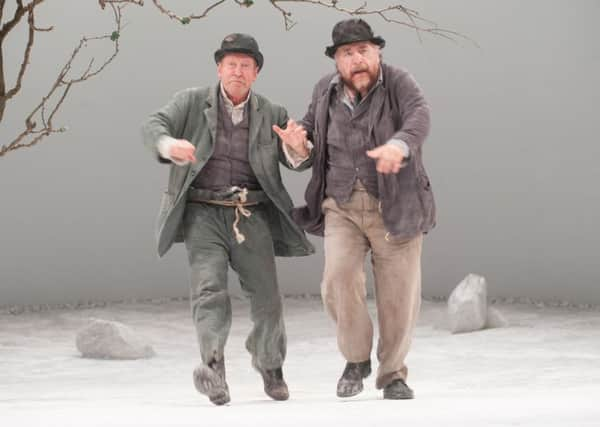Theatre review: Waiting for Godot, Edinburgh Lyceum


Vladimir and Estragon, Didi and Gogo. The two old tramps who take the stage in Samuel Beckett’s ground-breaking minimalist masterpiece - first seen in Paris in 1953 - are perhaps the most significant characters in the whole of 20th century drama, the ones who, in the words of the play’s first British director Peter Hall, “challenged and defeated a century of literal naturalism, and returned theatre to its metaphorical roots”.
Yet in all the productions I have seen and loved, over the years, I have never experienced one that lavishes so much care and genius on the development of the characters of Didi and Gogo - their different energies, and their contrasting responses to the situation in which they find themselves - as this 50th anniversary staging by Mark Thomson of the Lyceum, featuring the magnificent pairing of Brian Cox and Bill Paterson as Vladimir and Estragon.
Advertisement
Hide AdThat these two actors are no longer young is no secret; Cox actually appeared, aged 19, in the very first production of the Lyceum Theatre Company, 50 years ago this month.
Yet what’s extraordinary about their combined performance - as they wait and survive beside their shrivelled tree, in that empty landscape that soon comes to seem like a metaphor for human life itself - is how clearly we can see the little lads they once were, beneath the battered hats and thinning hair.
Cox’s Didi is mercurial, restless, funny, always performing, the very image of the lively, energetic one who can never quite believe that there is now nothing more to be done; Paterson’s Gogo is much quieter and more poetic, more confused and defeated by their situation, yet also closer to a recognition of its reality.
In this infinitely rich evocation of character - absolutely Scottish, yet completely universal - the detailed quality of the acting is sometimes breathtaking, Cox’s body-language and facial expressiveness a tragi-comic revelation, Paterson’s presence more subdued, but perfectly-pitched.
I’ve seen productions that gave the two central characters more support, towards the play’s long-drawn-out end; that were more sharply paced, or that made more of this double-act’s music-hall or fairground roots.
Yet given world-class support from John Bett as rich class-enemy Pozzo and Benny Young as his desperately ill-treated servant Lucky, and an exquisitely empty, luminous set by designer Michael Taylor and lighting man Mark Doubleday, Mark Thomson’s anniversary production offers a unique, austere, yet immensely rich insight into what may be the greatest play of the last century; and gives absolute primacy to two great creative actors, not young, but - enthrallingly and obviously - still in their prime.
Rating: * * * *
Until 10 October